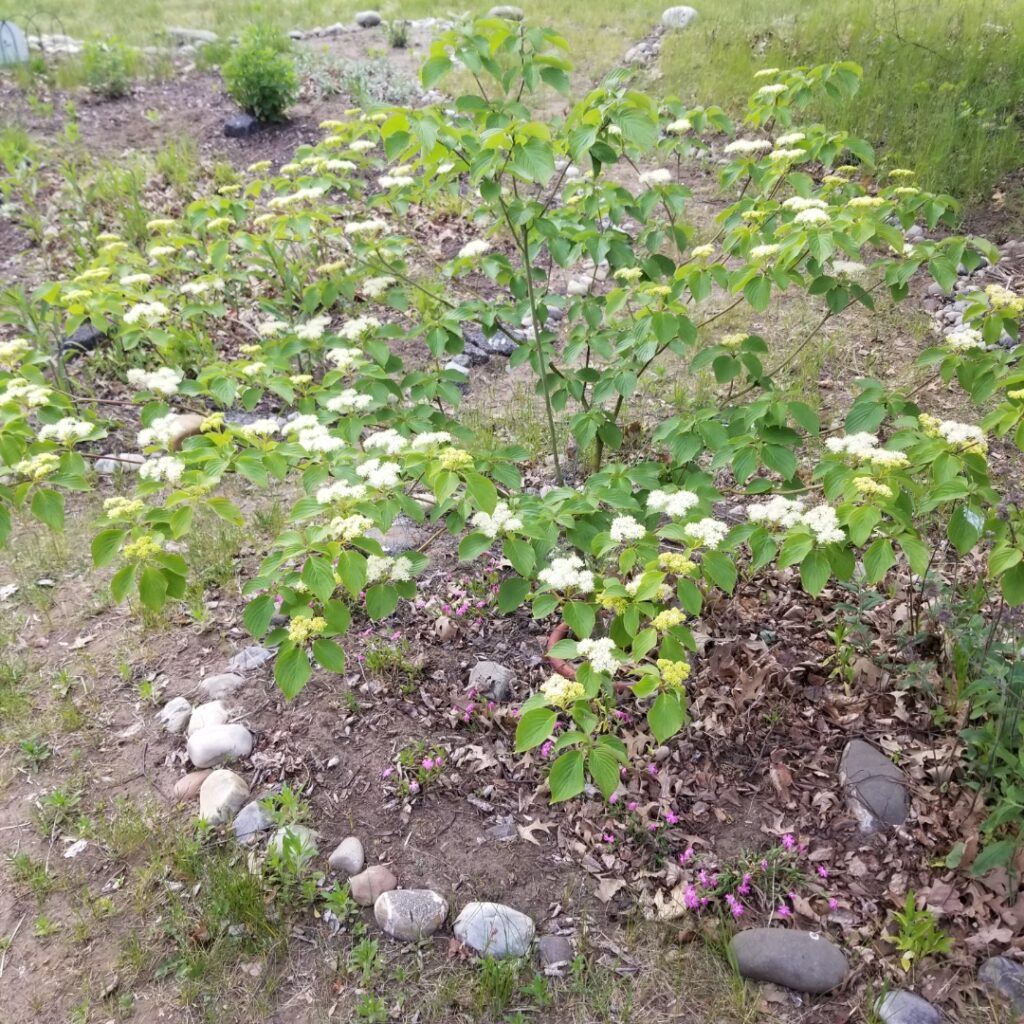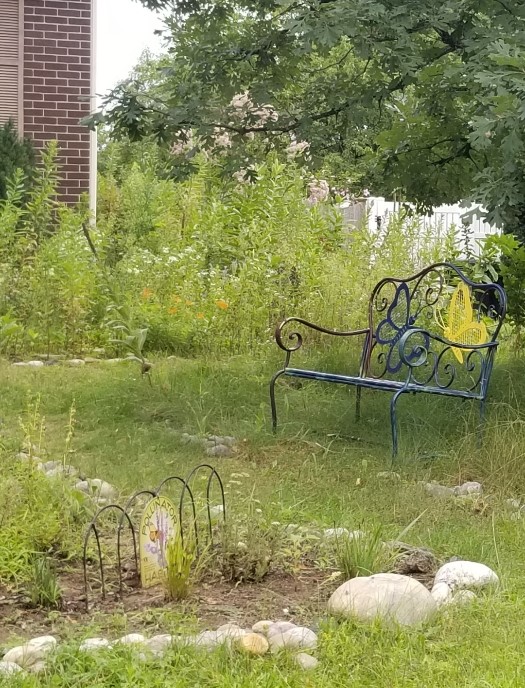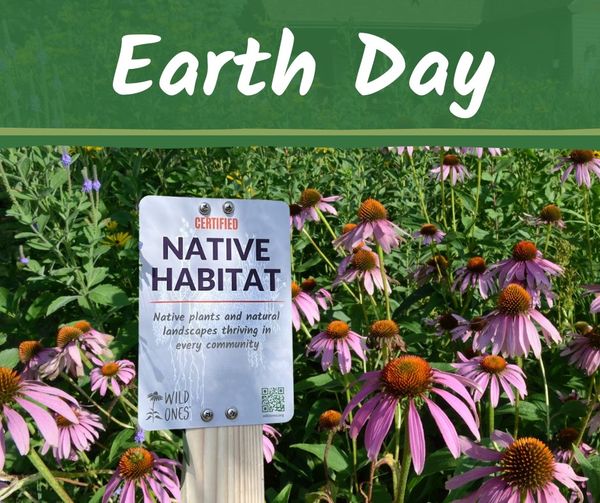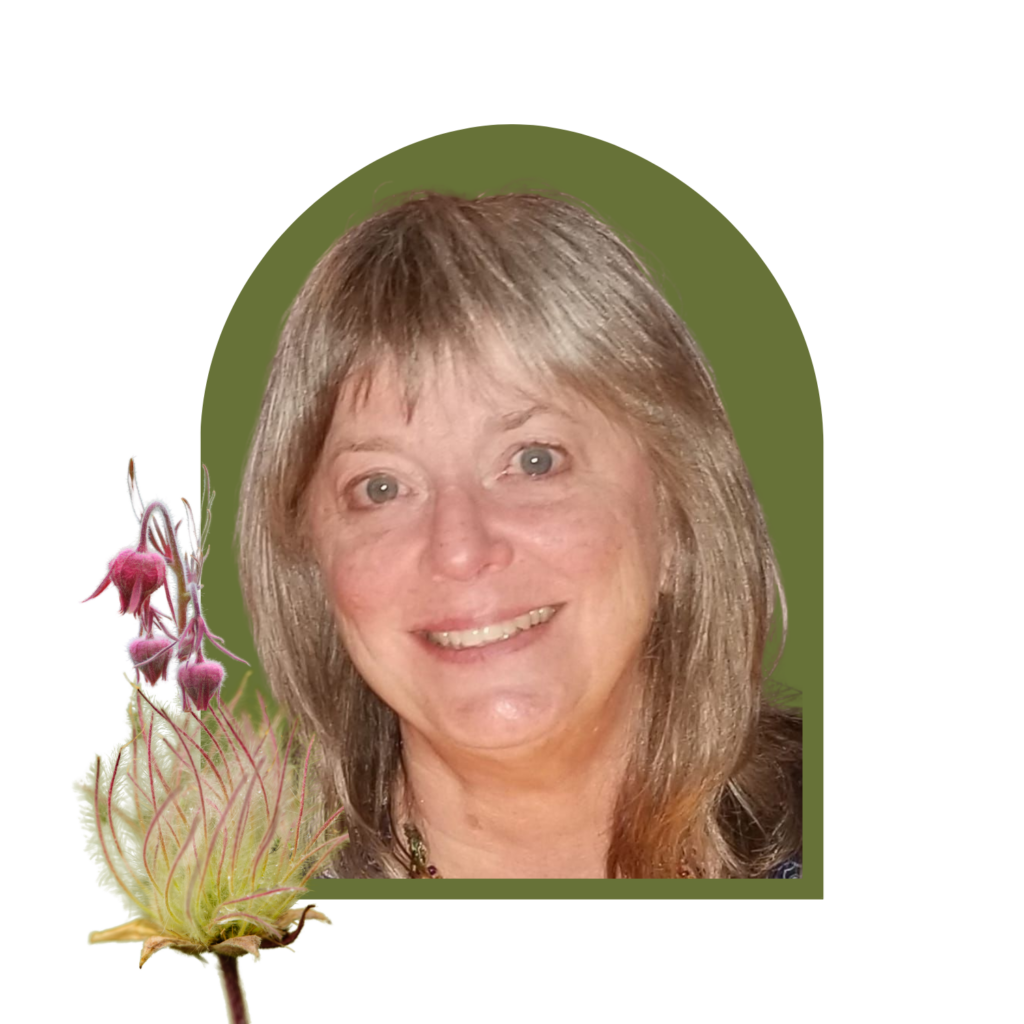Unlike years past when we’d gone to the garden center with the crowds on Memorial Day
weekend to find a load of annuals and would come home to stick them in the yard, this time we
watched the ground as soon as the snow melted, wondering just what would grow. The past fall,
we’d smothered the grass turf then pulled it out by its roots, and we’d sowed meadow seeds
before the frost. The wide array of flowers that bloom enchanted me, and soon, I was scouring
catalogs and stopping at nurseries to discover more pollinator-friendly plants for the next year.

Instant Gratification
But old habits die hard, and I continued to be a more impulsive gardener at first. I didn’t realize
that some plants will take a season or two to establish their roots before they begin to spread,
so I overcrowded them with faster growing species to fill in the blank spaces. And while a purple
flower might have looked great in the center of the bed, I didn’t pay attention to bloom times, so
they were just a stalk by the time the lovely yellows bloomed next to it. I also discovered that
“native” used in retail nurseries is like the term “organic” for foods – there are some pretty loose
definitions, and I wanted plants native to my local ecoregion and not any cultivars. The plants
that I put in areas that didn’t have the right moisture or soil conditions promptly decided to not
return.
What had I done? My enthusiastic attempt to create a new native garden made me feel like an
amateur creator, like a child with crayons copying a Monet. It’s a challenge to change, and a
challenge to gain skills. Sometimes, I would feel discouraged looking at this straggly beginning,
and tried to remember that toddlers fall often on their way to growing into track stars. But even
with clumsy first steps, it was already showing promise, as some butterflies visited, and native
bees nested than we’d ever had before.
Adding rocks to edge out garden beds and create walking paths lets others know that the garden is being cared for. As does a bench which is also a good place to take a moment. Observe the space and make sure you are planting the right plant in the right place.

Cues of Care
If you feel like your garden is too straggly while you wait for it to mature, you can try a few tricks
to help ensure it doesn’t appear to be a neglected space. Delineating the garden beds with
grass pathways between them, and perhaps surrounding the beds with river stones or deep
edging help make it look intentional. You can find attractive signage that says, “Native
Garden/Pollinator Friendly” and add some small art or a water feature as focal points. If you add
a bench under a tree, it is more inviting, and you may love to sit there to study the emerging
flora more closely.

Check out Wild One’s Earth Day relaunch of the Native Plant Garden Certification. Show your commitment to ecological restoration and help others by sharing your story. It’s more than just a sign; it’s a powerful statement of your dedication to our planet’s health.
Learn more here: https://wildones.org/cnhp/
I found it confusing to try to remember all the different new flower species growing in my yard,
so I purchased copper weatherproof labels, which serve as “name tags” as I try to memorize the
unique qualities of each plant type. These plants won’t die off from the frost, so it’s more like I
have adopted a pet and need to get to know them. I am getting to know my Joe Pye weed,
butterfly weed, jewelweed, and thimbleweeds, and others with more exotic names but are truly
natives.
This year, I anticipate I may need to correct some of my rookie errors. I will remove that cultivar
that I impulsively bought before I checked the New York Flora Atlas. I think I can remove more of
those pretty daylilies too. I feel ready to dig out that Knock-out rose bush I stubbornly had held
onto for sentimental reasons – it is starting to be a thorn in my side as I look for more spaces for
more native plants!
About the Author

Laura Davis is serving as our Chapter Membership Chair and a driving force on several teams including advocacy and giving presentations. She has a very approachable style and would be happy to give a presentation at your next event. Just contact our chapter and we will make the introduction.
